John Adams Facts
Our comprehensive list of John Adams Facts will teach you the most important facts about John Adams, signer of the Declaration of Independence, diplomat to Europe, first Vice-President of the United States and 2nd President of the United States.
Adams was truly one of the most influential Founding Fathers of the United States. He was called by his peers such things as the "Atlas of American Independence" and the "Colossus of Independence." He is known as the Father of the American Navy and wrote the Constitution of the State of Massachusetts. His political writings helped shaped the new governments of all the states and helped lay the political foundations of the newly independent nation.
Adams served as a diplomat to France, Holland and was the first Ambassador to Great Britain after the war. He played a key role in signing the Treaty of Paris, the treaty that ended the American Revolution. As President, he helped avert war with France that may have doomed the new nation.
On this page you will learn about John Adams' wife Abigail, his tumultuous relationship with Thomas Jefferson and their reconciliation late in life. You will always read about how Adams narrowly escaped capture by the British while at sea and find out that he was a strong believer in the God of the Bible.
John Adams Facts
Date of Birth
- October 30, 1735
John Adams Birthplace
- John Adams was born in what is now Quincy, Massachusetts. When he was born it was called the "Northern Precinct" of Braintree.
Parents' names
- Father - John Adams, Sr., February 8, 1691 - May 25, 1761
- Mother - Susanna Boylston Adams - March 5, 1708 - April 17, 1797
Parents' occupations
- John Adams, Sr. was a farmer during the agricultural season and a cobbler or shoemaker during the rest of the year. He also served in several local town positions as selectman (town council member), constable, tax collector and as a a lieutenant in the Massachusetts colonial militia. Adams, Sr. also served for many years as a deacon in the local Congregationalist church. Adams, Sr. was known for his passion for his religious beliefs and was affectionately known as "Deacon John."
Number of siblings
- 2
John Adams Facts - Birth order
John Adams was the oldest of 3 boys. The younger two were:
- Peter Boylston Adams was a farmer and lieutenant in the Massachusetts colonial militia
- Elihu Adams - May 29, 1741 – March 18, 1776, Elihu was a captain of the Braintree Company at the Siege of Boston and also fought at the Battle of Concord in April, 1775. Elihu died of dysentery at the age of 34 in 1776 while serving in the Continental Army. His wife's name was Thankful and they had one daughter, Susanna.
Personal Information
Nicknames and Pseudonyms
- The Dutiful son of Deacon John
- The Duke of Braintree
- The Sage of Quincy
- The Colossus of Independence
- The Atlas of American Independence
- The Father of the Navy
- His Rotundity - Adams earned this nickname while Vice-President under George Washington. He was heavily involved in a controversy over what title to give to the new President. Adams preferred a lavish title such as "His Majesty the President" or "His High Mightiness." Instead, the term "President of the United States" won the debate. Adams earned the nickname "His Rotundity" because of fighting for the more grandiose titles, along with the fact that he was short and overweight!
John Adams Education
- John Adams was first taught to read by his father.
- He also attended a "dame school," which was a school for young children operated by a woman.
- Next he attended Mr. Joseph Cleverly's Latin school, which was a sort of preparatory school for college. John was not doing so well at this school. He had a habit of skipping class to hunt and fish. He told his father he would work harder if he could study with Mr. Marsh, a private tutor.
- At 14, Adams began his studies with Mr. Marsh and his grades improved.
- At the age of 16, Adams went to Harvard and studied law. His father intended for him to go into the ministry, but John liked what he saw in the legal profession instead. He graduated with a Bachelor of Arts degree, 15th out of 24 in his class in 1755 at the age of 20.
- After teaching for a year at a Latin school in Worcester and saving up his money for law school, Adams apprenticed with lawyer James Putnam and went back to Harvard to earn a Master of Arts.
John Adams Facts - Religious Views
John Adams grew up as a Congregationalist and was a descendant of Puritan immigrants to America. As such, he grew up in a Bible believing church. He later attended a Unitarian Church, which in today's world is not considered to be a Bible believing church, but during Adams' time was much more orthodox in its belief system. Atheists sometimes use certain quotes of John Adams to defend their preferred supposition that he was not a Christian. However, these quotes would be more adequately described as criticisms of church organizations and practices, rather than criticisms of Christian doctrine.
Several comments of Adams that shed light on his religious views:
- "The Christian religion is, above all the religions that ever prevailed or existed in ancient or modern times, the religion of wisdom, virtue, equity and humanity, let the Blackguard Paine say what he will." - in response to Thomas Paine's Deist book The Age of Reason.
- "We went to meeting at Wells and had the pleasure of hearing my friend upon "Be not partakers in other men's sins. Keep yourselves pure."... We... took our horses to the meeting in the afternoon and heard the minister again upon "Seek first the Kingdom of God and his righteousness, and all these things shall be added unto you." There is great pleasure in hearing sermons so serious, so clear, so sensible and instructive as these..." - Letter to Abigail Adams, July 4, 1774
- "This day I went to Dr. Allison's meeting in the afternoon, and heard the Dr. Francis Allison... give a good discourse upon the Lord's Supper... I had rather go to Church. We have better sermons, better prayers, better speakers, softer, sweeter music, and genteeler company. And I must confess that the Episcopal church is quite as agreeable to my taste as the Presbyterian... I like the Congregational way best, next to that the Independent..." - Letter to Abigail Adams, October, 1774
- "It is religion and morality alone which can establish the principles upon which freedom can securely stand. The only foundation of a free constitution is pure virtue." - Letter to Zabdiel Adams, June 21, 1776
- "It is the duty of all men in society, publicly, and at stated seasons, to worship the SUPREME BEING, the great Creator and Preserver of the universe. And no subject shall be hurt, molested, or restrained, in his person, liberty, or estate, for worshipping GOD in the manner most agreeable to the dictates of his own conscience; or for his religious profession or sentiments; provided he doth not disturb the public peace, or obstruct others in their religious worship." - Thoughts on Government, 1776
- "The use of the Bible is so universal and its importance so great that your committee refers the above to the consideration of Congress, and if Congress shall not think it expedient to order the importation of types and paper, the Committee recommends that Congress will order the Committee of Commerce to import 20,000 Bibles from Holland, Scotland, or elsewhere, into the different parts of the States of the Union. Whereupon it was resolved accordingly to direct said Committee of Commerce to import 20,000 copies of the Bible." - On Committee to import bibles, September 11, 1777
- "We have no government armed with power capable of contending with human passions unbridled by morality and religion. Avarice, ambition, revenge, or gallantry, would break the strongest cords of our Constitution as a whale goes through a net. Our Constitution was made only for a religious and moral people. It is wholly inadequate for the government of any other." - Letter to the Officers of the First Brigade of the Third Division of the Militia of Massachusetts, October 11, 1798
- "The Christian religion, as I understand it, is the brightness of the glory and the express portrait of the character of the eternal, self-existent, independent, benevolent, all powerful and all merciful creator, preserver, and father of the universe, the first good, first perfect, and first fair. It will last as long as the world. Neither savage nor civilized man, without a revelation, could ever have discovered or invented it. Ask me not, then, whether I am a Catholic or Protestant, Calvinist or Arminian. As far as they are Christians, I wish to be a fellow-disciple with them all." - Letter to Dr. Benjamin Rush, January 21, 1810
John Adams Facts - Occupations
- John Adams' first job after graduating college was as a Latin school teacher in Worcester. He stayed there for a year, saving up his money, before becoming an apprentice of the lawyer James Putnam and returning to study law at Harvard.
- Adams was admitted to the bar in 1758 and started his own law practice at the age of 23, which he carried on through the beginning of the Revolution.
- Once the Revolution began, Adams became involved in politics, which he was involved in the rest of his life, serving in various positions such as delegate to the Continental Congress, Ambassador to France and Great Britain and President of the United States.
John Adams Signature
John Adams Family
Date of marriage, wife's name
- John Adams married Abigail Smith on October 25, 1764. Abigail was 19 when they married, five days before John's 29th birthday. They were third cousins. John was attracted to Abigail because of her literary acumen which was unusual for women at that time. Later she was known for her political wisdom, anti-slavery stance and pro-women's liberation beliefs. She was a member of the powerful Quincy family, a force in Massachusetts politics for generations.
Children's names, birth order, occupations
John and Abigail Adams had six children:
- Abigail (known as "Nabby") (July 14, 1765 – August 15, 1813) - Nabby married Colonel William Stephens Smith who was a secretary to her father John Adams when he was the United States minister to London. She died from breast cancer at the age of 48.
- John Quincy Adams (July 11, 1767 – February 23, 1848) - John Quincy served both as a United States Senator and Representative to the House of Representatives from Massachusetts, the United States Ambassador to the Netherlands under President George Washington, Ambassador to Prussia under his father President John Adams, Ambassador to Russia and to the United Kingdom under President James Madison, United States Secretary of State under President James Monroe and was the 6th President of the United States.
- Susanna Boylston (known as "Suky")(December 28, 1768 – February 4, 1770) - Suky died as an infant, only a little older than one year.
- Charles Adams (May 29, 1770 – November 30, 1800) - Charles was trained at Harvard as a lawyer but never found success, he also suffered from alcoholism, from which he died at the age of 30.
- Thomas Boylston Adams (September 15, 1772 – March 13, 1832) - Thomas served as his brother John Quincy's secretary when he was the US Ambassador to the Netherlands and to Prussia from 1794 to 1798. He had a law degree from Harvard and served in the Massachusetts legislature from 1805 to 1806 and as chief justice of the Circuit Court of Common Pleas for the Southern Circuit of Massachusetts.
- Elizabeth Adams (1777) - Elizabeth was stillborn.
Famous relatives
- John Adams' son, John Quincy Adams - Became 6th President of the United States
- Charles Francis Adams, Sr. - Grandson of John Adams, son of John Quincy Adams. Charles Francis served as a Representative to the US Congress from Massachusetts and was a state senator in Massachusetts. He ran for vice-president twice and was a prolific author and historical editor. Charles Francis produced a ten volume series about the work of his grandfather called The Works of John Adams, Esq. He served as Abraham Lincoln's Ambassador to Great Britain during the Civil War. He was very instrumental in maintaining British neutrality during the war and in monitoring and mitigating Confederate diplomatic activity in England. Charles Francis built the first presidential library to honor his father John Quincy Adams. The Stone Library is located on the premises of the Adams National Historic Site, the homestead of John and Abigail Adams and contains over 14,000 volumes.
- One of Charles Francis Adams' great-grandfathers was Nathaniel Gorham, a signer of the United States Constitution.
- Abigail Adams' mother Elizabeth Quincy Smith was a cousin of Dorothy Quincy, the wife of signer of the Declaration of Independence and Governor John Hancock.
- Abigail Adams was the great-granddaughter of the Rev. John Norton who was the founding minister of the Old Ship Church in Hingham, Massachusetts. This is the only remaining 17th-century Puritan meetinghouse in Massachusetts.
John Adams Homes
- The birthplace of John Adams located in Quincy (formerly Braintree), Massachusetts. The home is part of the Adams National Historic Park. John later inherited the home from his brother and lived here until he married Abigail in 1764. They moved just next door to a house built on the same property. Three homes of John Adams and the Stone Library, which houses the books of John Quincy Adams are on the site.
- John and Abigail lived here when John Quincy was born and owned the property for the rest of their lives, though they moved back and forth to Boston several times. This house sits just a few feet from the house John was born in. John Adams' law office was in this house. It was also in this house where John Adams, Samuel Adams and James Bowdoin wrote the 1780 Constitution for the State of Massachusetts.
- John Adams' home from 1781-1782 while Ambassador to the Netherlands at Keizersgracht 529 in Amsterdam. The house still looks nearly identical today to the way it did back then.
- John Adams stayed at this home on the Lange Brug in Leiden, the Netherlands with his boys John Quincy and Charles while they were studying at the University of Leiden when he was trying to negotiate Dutch assistance with the American Revolution.
- John Adams and Abigail lived at this home at Auteuil, France near Paris from August 1784 to May 1785, while he was in Europe to negotiate treaties of amity and commerce with European nations.
- John Adams lived in this house on Grosvenor Square, one of London's most fashionable neighborhoods, with Abigail and his daughter from 1785-1788 when he was Minister to Great Britain. The building was the United States Embassy for many years until a new one was built elsewhere on the square. The building was sold to the Canadian High Commission and today holds the offices of former British Prime Minister Tony Blair.
- John and Abigail Adams purchased this home in 1787. It had belonged to a loyalist who fled New England. It is in Quincy, Massachusetts (Braintree at the time), right next to the John Adams birthplace house and the John Quincy Adams birthplace house. The whole property is operated by the National Park Service as part of the Adams National Historical Park. The home consisted of only four ground floor rooms with an attic when they bought it. The rest was added later by Abigail and their son Charles Francis Adams. By the way, the proper pronunciation of the town Quincy is QUIN-ZEE, with the cy sounding like ZEE!
- Richmond Hill was the home of John and Abigail Adams at the beginning of his first term as Vice-President. At that time, the home of the government was New York City. Richmond Hill was just north of the town. It had served as George Washington's headquarters for the Continental Army for a brief time during the war and would later be owned by Aaron Burr. The Adams's lived here only for a year before the government was moved to Philadelphia in 1790.
- This is the President's House that stood at 524-530 Market Street in Philadelphia where John Adams, and George Washington before him, lived when they were President. Adams lived here from March 21, 1797 to May 30, 1800, at which time he moved out because the government was being moved to the newly built Washington DC.
- This is how the White House looked when John Adams lived in it from a drawing around 1800. At the time, it was called the Executive Mansion. The familiar south and north porticoes were not added until 1824 and 1830 respectively.
Pre-Revolutionary War
How he first got involved in the independence effort?
- John Adams first rose to prominence in Boston during the Stamp Act crisis of 1765. He was the author of the "Braintree Instructions," which were his town's instructions to its representative in the Massachusetts Legislature telling him not to comply with any provisions of the Stamp Act. The Braintree Instructions ended up being a model that many other towns used to instruct their representatives as well.
- Adams also wrote a popular series of essays that appeared in the Boston Gazette in August 1765. They were later republished under the title A Dissertation on the Canon and Feudal Law. In these essays, Adams tied Puritan principles to the principle of resistance to unjust government and explained how the British Parliament was violating two inalienable rights of all British citizens - the right to be taxed only by one's elected representatives and the right to trial by jury.
- Adams delivered a speech to the Governor and council in December of 1765 in which he stated that the Stamp Act was unjust based on the fact that it was not chosen by the colonists' elected representatives.
- Adams continued his public criticisms of the Townshend Acts in 1767 and 1768, which attempted to raise taxes on the colonists.
- In 1768, Adams defended John Hancock against smuggling charges in the vice-admiralty court. Part of his argument was that Parliament could not tax the colonists without their consent and that the existence of the vice-admiralty courts, which did not use juries, was a violation of the colonists' rights. The charges against Hancock were dropped and this made Adams enormously popular.
- In 1769, John Adams took a case called Rex vs. Corbet, in which some American sailors were charged with the murder of a British naval officer when he tried to impress them into naval service. The sailors were found innocent on the grounds that impressment into naval service was illegal. Adams popularity soared all the more.
- The colonists' opposition to the Townshend Acts led to the British occupation of Boston in 1768, which in turn led to the Boston Massacre on March 5, 1770, in which an incident of colonists taunting British soldiers turned bloody when the soldiers became afraid for their safety. John Adams, as a prominent attorney and public voice, was asked by the soldiers to represent them in court after they were tried with murder and no other lawyers would represent them. Adams agreed to defend the soldiers because he believed they were innocent of firing first on the crowd and because he believed everyone should have the right to a fair trial. He defended them even though he knew it would be unpopular in the eyes of fellow Bostonians. In the end, 6 of the 8 soldiers were acquitted. The other two, who had fired directly into the crowd, were convicted of manslaughter. Their sentence was to be branded on their thumbs. Adams didn't seem to suffer in the public's eye after the trial. Instead, his stature increased because of his fight for fairness and basing the conviction on evidence and not on popular mob rule.
- Adams was elected to the Massachusetts General Court (the Massachusetts Legislature) shortly before the trial of the Boston Massacre soldiers started.
- In 1772, Adams wrote "Two Replies of the Massachusetts House of Representatives to Governor Hutchinson," at the request of fellow Boston patriots in response to Parliament's decision to remove the responsibility of the colonial legislatures of paying the salaries of their Royal Governors and judges. Instead, Parliament would pay their salaries. In it, Adams articulated that the colonies were never under the authority of Parliament and that if Parliament could not agree to this, the only alternative left to the colonists was to seek independence.
- Adams was elected to the First Continental Congress in 1774 and the Second Continental Congress in 1775 when the war began.
- Adams published his work "Novanglus; Or, A History of the Dispute with America from its Origin, in 1754, to the Present Time," in 1775. In this work, Adams used his extensive knowledge of British and colonial law to describe the history and principles of British law and how they had developed over time. He used his conclusions to show decisively why Parliament did not have authority over the colonies and why the colonial legislatures had complete legal control over all internal matters.
- Through all of these activities, speeches and writings, Adams became well known to the point that once he arrived in the Continental Congress he was well respected and immediately became a leader in the forefront.
The Revolutionary War begins!
Where was he when the war began?
- Adams was at home in Braintree when the war broke out in Lexington and Concord in April 1775. He rode out along the route to see the results for himself, passing British soldiers and burned houses. Shortly afterwards, he left for the Second Continental Congress in Philadelphia. In June, Adams nominated George Washington to become the leader of the Continental Army, an important move because Washington's involvement helped persuade the southern states to join in military involvement in the war.
Did he see military action during the war?
- John Adams never fought in the war. He was serving in political office for most of the time. The closest he came to military action occurred during his 1778 trip to France where he was appointed an ambassador from Congress. During the voyage, Adams' ship, the Continental Navy frigate Boston outran several British ships trying to capture her. As the Boston approached Spain, Adams personally took up arms and participated in the capture of a British merchant ship called the Martha.
John Adams Facts - Accomplishments during the Revolution
- On May 6, 1776, John Adams proposed a resolution to the Continental Congress that each colony should form its own government independent of England. On May 10th, the resolution was adopted. This was effectively the first vote for complete independence in Congress, even though the formal resolution for independence was not made until July 2nd.
- Adams nominated George Washington to be Commander-in-Chief of the Continental Army.
- Adams seconded the resolution of Richard Henry Lee, known as the Lee Resolution, on June 7, 1776, which declared that colonies should declare their independence.
- John Adams was one of five men who served on the "Committee of Five" that wrote the Declaration of Independence. Thomas Jefferson drafted the document, then John Adams, Ben Franklin, Roger Sherman and Robert Livingston advised and made alterations before presenting the document to the full Congress where it was amended some more before its final acceptance. The other members of the committee favored John Adams to write the Declaration, but he insisted that Jefferson write it because he thought Jefferson was a better writer and because he believed that he, himself, was not well liked. You can read more about how Thomas Jefferson wrote the Declaration of Independence here.
- John Adams served on more committees in the Continental Congress than any other delegate. He served on more than 90 committees and was the chairman of 25 of them! This included the powerful Board of War and Ordinance, the committee in charge of the Continental Army.
- Adams wrote most of the new Constitution of the State of Massachusetts in 1780.
- John Adams served as one of the chief negotiators of the Treaty of Paris, which was the treaty signed between the United States and Great Britain that ended the war in 1783, along with John Jay and Ben Franklin.
John Adams Facts - Offices He Held
John Adams Facts - Which government offices did he hold?
- Elected as Surveyor of Highways in Braintree - 1764
- Selectman (town council member) in Braintree - 1766
- Delegate to Massachusetts Assembly, June 1770, 1773
- Delegate to the First Continental Congress from Massachusetts Bay - September 5, 1774 – October 26, 1774
- Delegate to the Second Continental Congress from Massachusetts - May 10, 1775 – June 27, 1778
- Commissioner to France - 1778 - 1779
- Member of Massachusetts State Constitutional Convention - 1779
- Minister Plenipotentiary to negotiate terms of peace with Great Britain - September 27, 1779 - 1781
- United States Ambassador to the Netherlands - April 19, 1782 – March 30, 1788
- United States Ambassador to Great Britain - April 1, 1785 – March 30, 1788
- 1st Vice President of the United States - April 21, 1789 – March 4, 1797
- 2nd President of the United States - March 4, 1797 – March 4, 1801
- Delegate to new Massachusetts Constitutional Convention - 1820
Did he hold any office under the Royal government?
- No
John Adams Facts - Which party was he in?
- Federalist Party
Interesting Personal Information
- Boston Massacre - John Adams was the lawyer who defended the British soldiers who were involved in the Boston Massacre in 1770 when they fired on an unarmed crowd that was taunting them. Adams knew the decision would be unpopular, but believed that everyone had a right to be defended in court. Only two of the soldiers were convicted of manslaughter, but Adams never suffered any retribution from his fellow colonists for defending them.
- As Ambassador to the Netherlands from 1782 to 1785, John Adams helped secure recognition from the Netherlands of the new United States government as an independent nation on April 19, 1782. He also negotiated two large loans from the Netherlands to the fledgling US government that helped the government stay solvent as it struggled to pay off its war debts and rebuild after the war.
- John Adams purchased a home at Fluwelen Burgwal 18 in the Hague while he was Ambassador to the Netherlands in 1782. This home became the first American embassy in the world.
- John Adams negotiated the United States' first treaty of amity and commerce after the Revolution with the Netherlands in October 1782.
- A specific date for the end of slavery in Massachusetts is hard to determine, but it is usually considered to be no later than 1780 when the Massachusetts Constitution was adopted. In the Constitution, which was written by John Adams, slavery was forbidden by its Declaration of Rights.
- The passing of power from the first President of the United States, George Washington, to the second President of the United States, John Adams, marked the first peaceful regime change of the new country. Adams is credited with keeping in place most of George Washington's policies and programs, as well as keeping his entire cabinet in place. This helped ensure a peaceful transition and established the manner of all the future peaceful regime transitions to come.
- John Quincy Adams, John Adams' eldest son, became the 6th President of the United States, 16 months before Adams died. Along with George H.W. Bush and George W. Bush, they are the only father/son pairs to ever be elected President.
- In his role as President of the Senate, as George Washington's Vice-President, it fell to John Adams to count the ballots during the election of 1796. It also fell to him to announce the winner... John Adams.
- Samuel Adams was 13 years older than his second-cousin John Adams.
- The Massachusetts Constitution, which was largely written by John Adams, is the oldest constitution still in use in the world.
- The John Adams $1 presidential coin was released in 2007 as part of the US Mint's $1 Presidential Coin series honoring all of America's presidents.
- John and Abigail Adams exchanged over 1100 letters which survived. They give one of the best glimpses into life during the American Revolution and founding period of any source. They discuss everything from farming their land to politics to foreign affairs to raising their children. Part of the reason they wrote so many letters was because John was gone so often on diplomatic duties and writing was their only way of communicating.
- December of 1800 was a hard month for John and Abigail Adams. Not only did John fail to win re-election to the presidency, but their second son, Charles, died of alcoholism.
- John Adams appointed dozens of judges in his last few days and hours of office as President before Thomas Jefferson was to take over. These became known as the "midnight judges." One of his appointees was William Marbury, who was to be the Justice of the Peace for the District of Columbia. Because of the late hour of the appointments, not all of the commissions could be delivered before Jefferson took over on March 4, 1801. The new Secretary of State under Thomas Jefferson, James Madison, at Jefferson's direction, refused to deliver the remaining commissions, leading to a lawsuit filed by Mr. Marbury, alleging that it was illegal for Mr. Madison not to deliver his commission. The case went to the Supreme Court where John Marshall, who was also appointed by John Adams, was the Chief Justice. The final ruling, in one of the most important cases in American legal history, is known as Marbury vs. Madison. In the ruling, the Chief Justice wrote that the court did not have the authority to force Mr. Madison to deliver the commission. Mr. Marbury argued that the Court did have this authority because of the Judicial Act of 1789. The Court said the Act directly contradicted Article III of the Constitution, which describes the Supreme Court's authority. Justice Marshall stated that the Congress could not override the Constitution with its own laws and overturned the relevant portion of the Judicial Act of 1789. This established a precedent in American law known as judicial review, in which the Court determines whether or not a law passed by a legislative body is constitutional or not. The principle of judicial review took hold in American law and is practiced regularly to this day, though it is controversial and many people believe the Courts should not have the authority to overturn laws made by elected representatives.
- John Adams lived longer than any former President, to the age of 90, until Ronald Reagan succeeded him, living to the age of 93.
- John Adams outlived his wife by 8 years and also outlived four of his six children.
- Both John Adams and Thomas Jefferson were invited to attend the nation's 50th Anniversary celebrations on July 4th, 1826 in Washington DC. Both of them declined the invitation due to their health, Adams being almost 91 and Jefferson 83. Of course, both of them passed away on that very day, July 4th, 1826.
- Peacefield, John Adams home in Quincy, Massachusetts, was lived in by successive generations of Adams descendants until 1927. In 1946, all three Adams houses (including the birth homes of John and John Quincy), the Stone Library and 13 acres was given to the United States by the Adams family. The 13 acre property and 11 buildings comprise the Adams National Historic Park and include personal books and papers of John Adams, John Quincy Adams, Charles Francis Adams, Henry Adams and Brooks Adams, as well as over 100,000 artifacts and original furnishings.
More Interesting John Adams Facts
- John Adams lost his first case as a lawyer on a technicality. He forgot to write the name of the county on the writ!
- Adams' first significant legal victory was to get wine smuggling charges dropped against a prominent client in 1769. The client was John Hancock.
- Captain Thomas Preston was in charge of the soldiers who fired on the crowd in the Boston Massacre. After John Adams defended him in court and he was declared innocent, Preston wrote to General Gage about what a marvelous job his lawyers had done, but he never personally thanked John Adams according to Adams' own diary!
- During the election of 1793, the Anti-Federalists started a rumor that the Federalists were going to start a monarchical dynasty by sending Nabby Adams, John Adams' daughter, to England to marry King George III!
- When John Adams was President, Great Britain and France were at war. France began to seize American merchant ships that were trading with Great Britain. In spite of this, France remained popular in America due to its recent help in winning the American Revolution. This changed though due to an event called the XYZ Affair, in which French diplomats asked for large bribes before they would negotiate an end to the harassment of American shipping. This caused a huge shift in the American public's opinion to the point where many began to call for all out war against France. President Adams knew America could not win a war against France, but he did consent to the harassment of French ships by American ships. This is now known as the Quasi-War with France. Adams built up the army and navy in case of an all out French invasion. He built six new frigates for the Navy, including the still commissioned USS Constitution, which is moored in Boston Harbor. In February, 1799, Adams sent William Vans Murray to France to negotiate a permanent peace with Napoleon Bonaparte. Many Americans were angry with Adams for not going to war with France, but most historians believe Adams' foresight saved the American republic. If they had gone to war with France at the time, many believe that the United States would not have survived past its infancy. Adams lost much of his popularity due to the decision and this was part of the reason why he did not win a second term. He came to believe though that it was one of the wises decisions he ever made, in spite of the personal cost to his reputation. In a letter to James Lloyd in January, 1815, Adams stated that, "I desire no other inscription over my gravestone than: Here lies John Adams, who took upon himself the responsibility of the peace with France in the year 1800."
- John Adams also lost popularity due to his signing the Alien and Sedition Acts into Law. These were a series of laws designed by Federalists to reign in opposition Democratic-Republicans who were threatening rebellion and secession from the United States. The atmosphere was during a time of impending war with France. Many Democratic-Republicans believed the Federalists were acting as monarchs and aristocrats and seemed to encourage a bloody French Revolution style rebellion against them. Some were threatening to refuse to follow federal laws. Others were threatening secession from the union. Federalists believed French immigrants and agents were the source of much of this ideology. This caused Federalists in Congress to pass the Alien and Sedition Acts, which gave prison terms and fines for publishing "false" information about the government, required a period of 14 years before immigrants could become citizens and gave the President authority to deport immigrants he thought were a danger. Only ten people were ever convicted under the Acts. President Adams never supported the Acts or deported anyone, but since he signed them into law he was targeted. The Acts were enormously unpopular because of their obvious curtailing of free speech rights. His signing of the Alien and Sedition Acts helped secure Adams' defeat for a second term.
- During the XYZ Affair crisis and the Quasi-War with France, Congress greatly increased the size of the army and navy and raised taxes to fund them. Many Americans were outraged with the higher taxes, especially those of Jefferson's Democratic-Republican party. In eastern Pennsylvania, farmers refused to pay the taxes and even attacked federal tax collectors in an incident known as Fries' Rebellion. John Adams later pardoned everyone who was arrested shortly before the election of 1800.
- The Stone Library was built at the request of John Quincy Adams in his will. It houses 14,000 books that were in his personal collection. The building sits on the Adams' property near the Peacefield House. It is called the "Stone" Library because Adams specifically requested that the building be built of stone to prevent its being destroyed by fire. It was finished in 1873.
- John Adams spent almost his entire presidency in Philadelphia, which was then the seat of the federal government. He left the President's House in Philadelphia in May, 1800. He was the first President to live in the White House. He moved in on November 1 of 1800, in the final months of his presidency.
- One of John Adams' most influential acts as President turned out to be his appointing of John Marshall as the fourth Chief Justice of the Supreme Court. Marshall was the longest serving Chief Justice in the Court's history, serving for 34 years. He laid much of the foundations of American law and helped cement many of Adams' Federalist party ideals into the government, including the idea that federal courts should throw out laws that violate the Constitution and the authority of federal law over state law.
- Adams tried to appoint John Jay as Chief Justice in 1800. Jay had served in the position under Washington, but stepped down in 1795 when he became governor of New York. Jay declined the appointment and Adams appointed John Marshall instead, who became the longest serving Chief Justice in American history.
John Adams Facts - Works and Quotes
Selected works by John Adams
- The Braintree Instructions, 1765 - John Adams wrote this set of instructions from the town of Braintree to its representative in the Massachusetts Legislature, telling him not to cooperate with any provisions of the Stamp Act.
- A Dissertation on the Canon and Feudal Law, August, 1765 - This work was published as four separate articles during the Stamp Act crisis of 1765. It was reprinted in London in 1768 under this title. It relates many of the themes of liberty and freedom from unjust law that led to the Revolution.
- Novanglus, Or, A History of the Dispute with America from its Origin, in 1754, to the Present Time, 1775 - In this work, John Adams lays out the history and rights of the British Constitution. He also describes how the colonial legislatures are legally sovereign over their own territories and why Parliament does not have control over them.
- Thoughts on Government, April 1776 - Because of Adams' extensive knowledge of the law, he was often asked his opinion about how the newly freed states should form their new constitutions. Richard Henry Lee of Virginia published Adams' suggestions in this pamphlet which was referred to by every state as they wrote their new governing documents. In it, Adams recommends a republican form of government, bicameral legislatures, separation of powers between the branches of government and enumerated powers - the principle that the responsibilities of the government should be confined to those decided upon and written down by the people and should go no further.
- A Defence of the Constitutions of Government of the United States, 1787 - Adams wrote this work while he was Minister to Great Britain. In it, he defends the structure of the Constitutions of the various states in America. He explains and validates the use of bicameral legislatures, separation of powers and the necessity of having a strong executive branch to prevent the development of a controlling aristocracy.
- Inaugural Address, March 4, 1797
- Presidential Proclamation of Fasting and Prayer, March 3, 1798
- John Adams and Abigail Letters, 1763-1801 - John and Abigail Adams wrote a voluminous number of letters during his political and diplomatic travels. Scholars view the more than 1,100 letters as one of the best windows into early American life because of the wide range of topics they discussed in the letters.
- John Adams and Thomas Jefferson letters, 1812-1824 - Adams and Jefferson exchanged many letters during the latter part of their lives. Their discussions ranged upon everything from agriculture to politics. Since they lived the longest of any of the founders, except for Charles Carroll, their opinions and views give a unique look into the founding period.
Quotes by John Adams
- "Facts are stubborn things; and whatever may be our wishes, our inclinations, or the dictates of our passion, they cannot alter the state of facts and evidence." - Argument in Defense of the Soldiers in the Boston Massacre Trials, December 1770
- "There is danger from all men. The only maxim of a free government ought to be to trust no man living with power to endanger the public liberty." - Notes for an Oration at Braintree, Massachusetts, Spring, 1772
- "We have appointed a continental Fast. Millions will be upon their Knees at once before their great Creator, imploring his Forgiveness and Blessing, his Smiles on American Councils and Arms." - Letter to Abigail Adams, June 17, 1775
- "It is religion and morality alone which can establish the principles upon which freedom can securely stand. The only foundation of a free constitution is pure virtue." - Letter to Zabdiel Adams, June 21, 1776
- "The Second Day of July 1776, will be the most memorable Epocha, in the History of America. I am apt to believe that it will be celebrated, by succeeding generations, as the great anniversary festival. It ought to be commemorated, as the Day of Deliverance, by solemn acts of devotion to God Almighty. It ought to be solemnized with pomp and parade, with shows, games, sports, guns, bells, bonfires and illuminations, from one end of this continent to the other, from this time forward forever." - Letter to Abigail Adams, July 3, 1776
- "My country has in its wisdom contrived for me the most insignificant office that ever the invention of man contrived or his imagination conceived." - Speaking of his role as Vice-President in a letter to Abigail Adams, December 19, 1793
- "I pray Heaven to bestow the best of blessings on this house and all that shall hereafter inhabit it. May none but honest and wise men ever rule under this roof." - About the White House, in a letter to Abigail Adams, November 2, 1800
- "Our obligations to our country never cease but with our lives." - Letter to Benjamin Rush, April 18, 1808
Click here to read more John Adams Quotes
Quotes about John Adams
- "This illustrious patriot has not his superior, scarcely his equal, for Abilities & virtue on the whole continent of America." - Benjamin Rush to Jacques Barbeu-Dubourg - September 16, 1776
- "You stand nearly alone in the history of our public men in never having had his integrity called in question or even suspected." - Benjamin Rush to John Adams, 1811
- "He means well for his country, is always an honest man, often a wise one, but sometimes, and in some things, absolutely out of his senses." - Benjamin Franklin to Robert Livingston - July 22, 1783
- "Mr. Adams, like other men, has his faults and his foibles. Some of the opinions he is supposed to entertain, we do not approve—but we believe him to be honest, firm, faithful and independent—a sincere lover of his country—a real friend to genuine liberty; but combining his attachment to that with the love of order and stable government. No man’s private character can be fairer than his. No man has given stronger proofs than him of disinterested and intrepid patriotism." - Alexander Hamilton to John Steele - October 15, 1792
- John Adams was "the pillar of [the Declaration's] support on the floor of Congress, its ablest advocate and defender against the multifarious assaults it encountered." - Thomas Jefferson, in a letter to William P. Gardner, February 19, 1813
- "The man to whom the country is most indebted for the great measure of independency is Mr. John Adams of Boston. I call him the Atlas of American Independence." - Declaration of Independence signer Richard Stockton in a letter to his son, 1821
- "John Adams was our Colossus on the floor. He was not graceful, nor elegant, nor remarkably fluent; but he came out occasionally with a power of thought & expression, that moved us from our seats." - Thomas Jefferson, Conversation with Daniel Webster, 1824
- "I have always viewed him, as a man of eminent talents, zealously, courageously & faithfully exerted in effecting the Independence of the Thirteen United Colonies: and I believe that he, more than any other individual, roused and prepared the minds of his fellow citizens to decide positively and timely that greatest revolutionary question." - Timothy Pickering to Daniel Webster, July 19, 1826
John Adams Facts - The End of his Life
Date and age of retirement
- John Adams retired from public life with his defeat for a second presidential term in 1800. He lived at his home in Braintree, Massachusetts for the rest of his life.
Death of John Adams
- Adams fell ill with pneumonia shortly before his death on July 4, 1826 (aged 90). He fell into a coma and died of heart failure.
Where was John Adams buried?
- John Adams is buried at the United First Parish Church in Quincy (once Braintree), Massachusetts, along with his wife Abigail and their son, John Quincy Adams, the 6th President of the United States and his wife Louisa. All four were originally buried in the cemetery across the street, but were later moved into the church. Two gated doors lead into the low-ceilinged chamber in the basement of the church. The coffins are lined up with John Adams first on the left, then Abigail, John Quincy and Louisa. The church was once pastored by John Hancock's father.
- Location of John Adams' and John Quincy Adams' graves
- John Adams' tomb in the basement of the United First Parish Church, Quincy, Massachusetts. Notice the flag has 15 stars and 15 stripes. This is how the flag looked during Adams' presidency after the first two new states, Vermont and Kentucky, were added to the union. It is also known as the Star Spangled Banner Flag.
- This view shows John and Abigail Adams' graves.
- This view shows the graves of John Quincy and Louisa Adams.
- In this picture, you can see how all four crypts are laid out side by side in the room. John Adams' crypt is the first one in the lower left, followed by Abigail's, John Quincy's and Louisa's.
Epitaph on gravestone
- John Adams had once written in a letter to James Lloyd that he wished for the following statement to be on his gravestone: "I desire no other inscription over my gravestone than: Here lies John Adams, who took upon himself the responsibility of the peace with France in the year 1800." However, on the current crypt, only the name "John Adams" is inscribed. The plaque hanging in front of the mausoleum says:
JOHN ADAMS
FRAMER OF THE CONSTITUTION OF MASSACHUSETTS
SECOND PRESIDENT OF THE UNITED STATES
1735-1826
THE JOHN ADAMS CHAPTER DAUGHTERS
OF THE AMERICAN REVOLUTION CAUSED
THIS TABLET TO BE AFFIXED
1900
The clip below is from the HBO original miniseries John Adams, which was based on the book, John Adams by Pulitzer Prize winning author David McCullough. If you have not seen the movie or read the book, you should take the time! They give an excellent depiction not only of John Adams, but of the whole founding period.
You can order the John Adams book from Amazon here and the John Adams miniseries here.
Published 8/17/12
If you enjoyed reading these John Adams Facts, you will also like to read the following Revolutionary War Facts:
- George Washington Facts
- Benjamin Franklin Facts
- Thomas Jefferson Facts
- James Madison Facts
- Samuel Adams Facts
- Paul Revere Facts
- John Hancock Facts
- Betsy Ross Facts
Return to top of John Adams Facts
Revolutionary War and Beyond Home
Like This Page?
© 2008 - 2022 Revolutionary-War-and-Beyond.com Dan & Jax Bubis



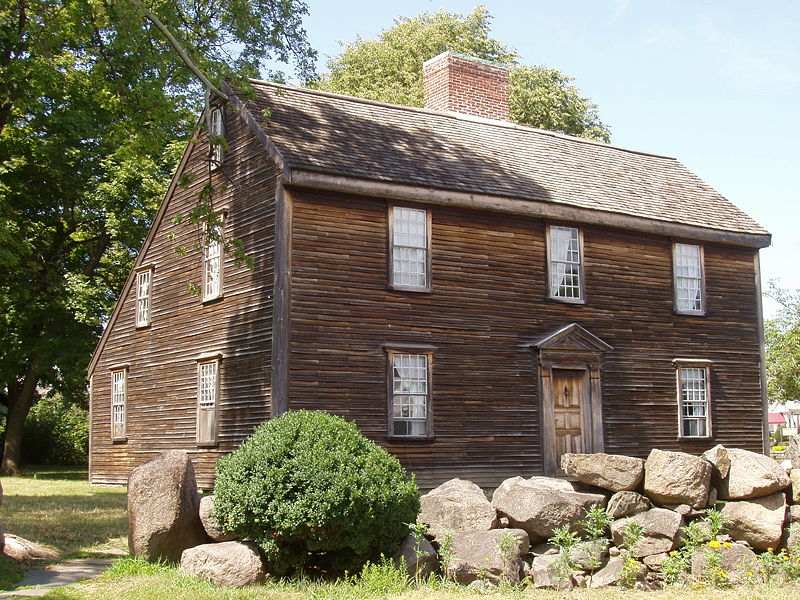
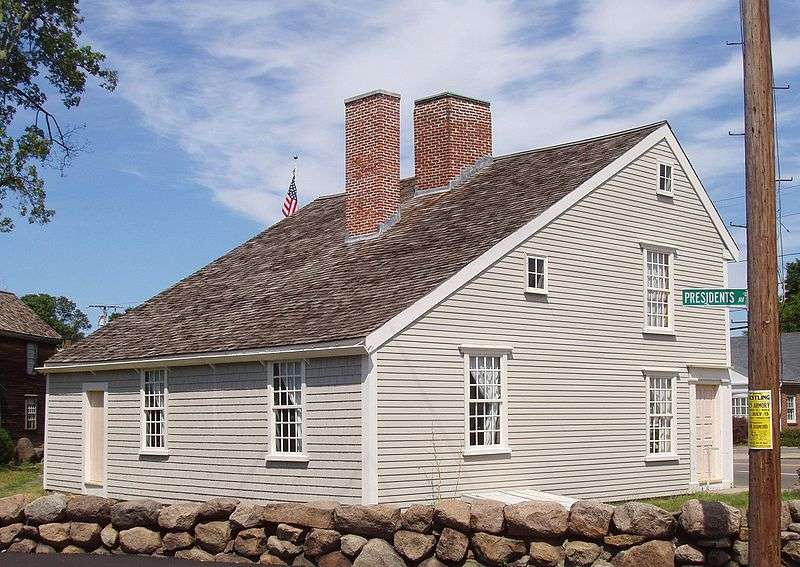
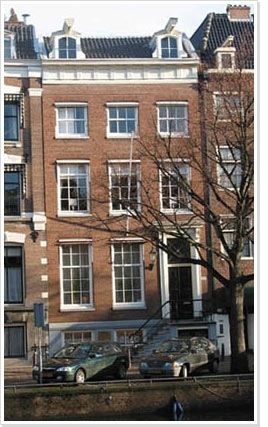
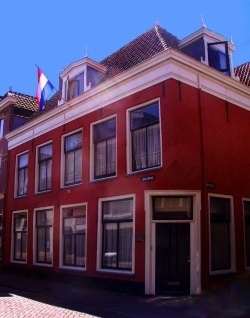
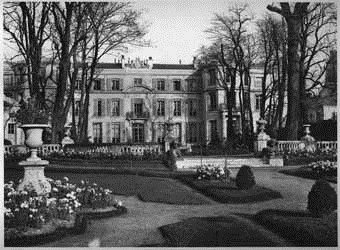
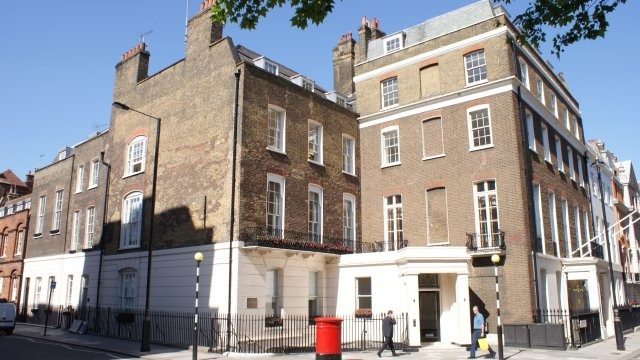
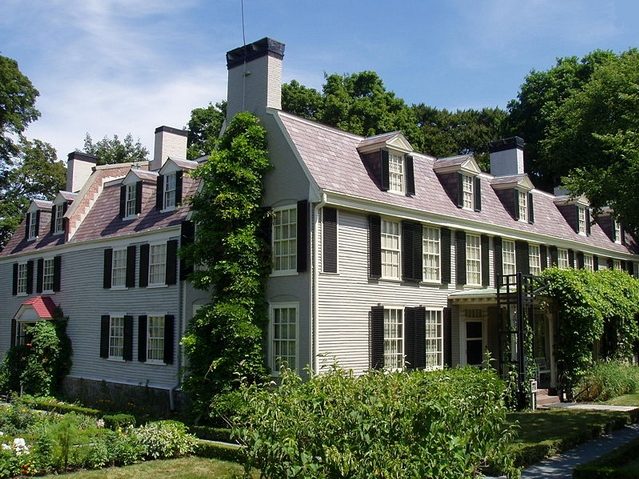
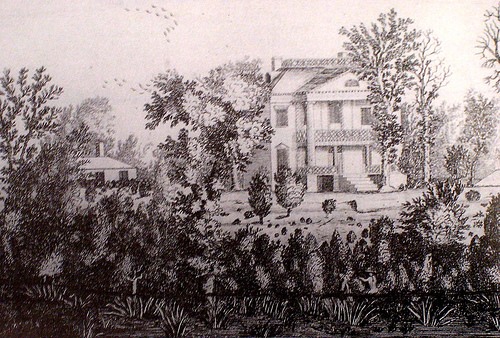
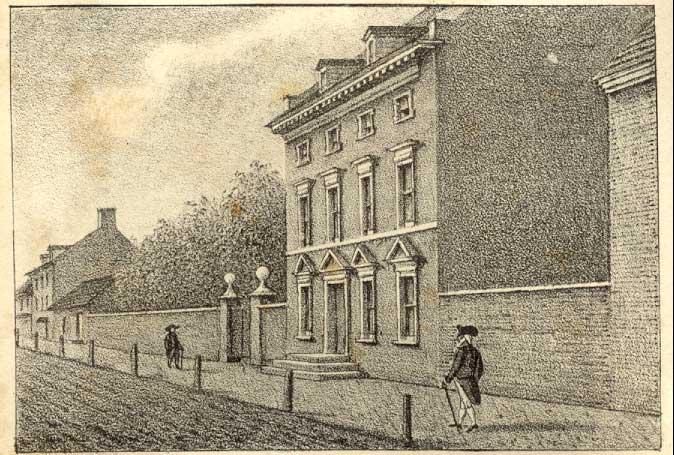
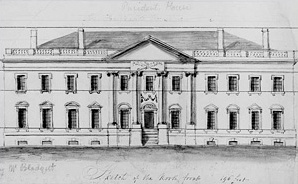
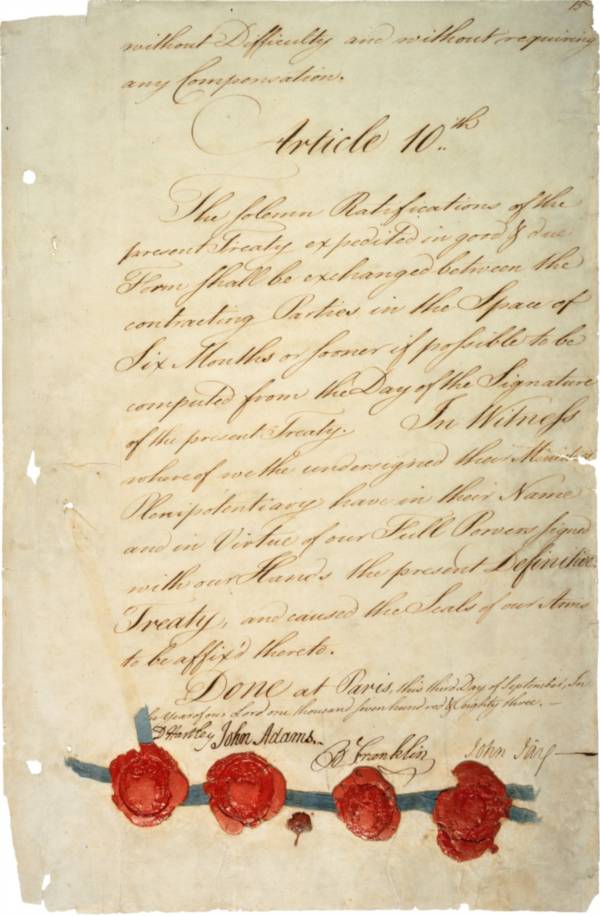
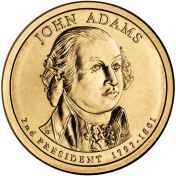
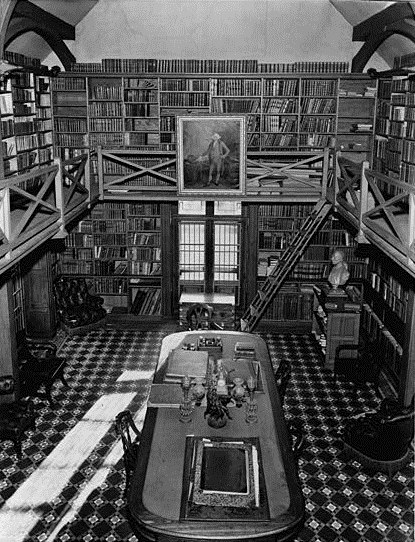
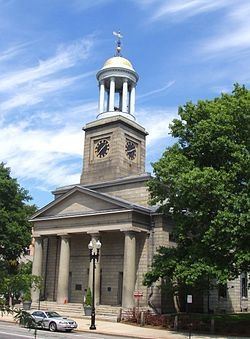


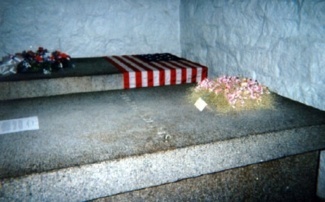
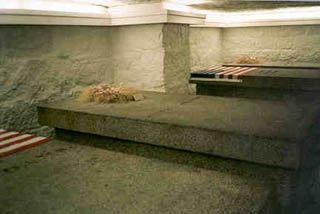
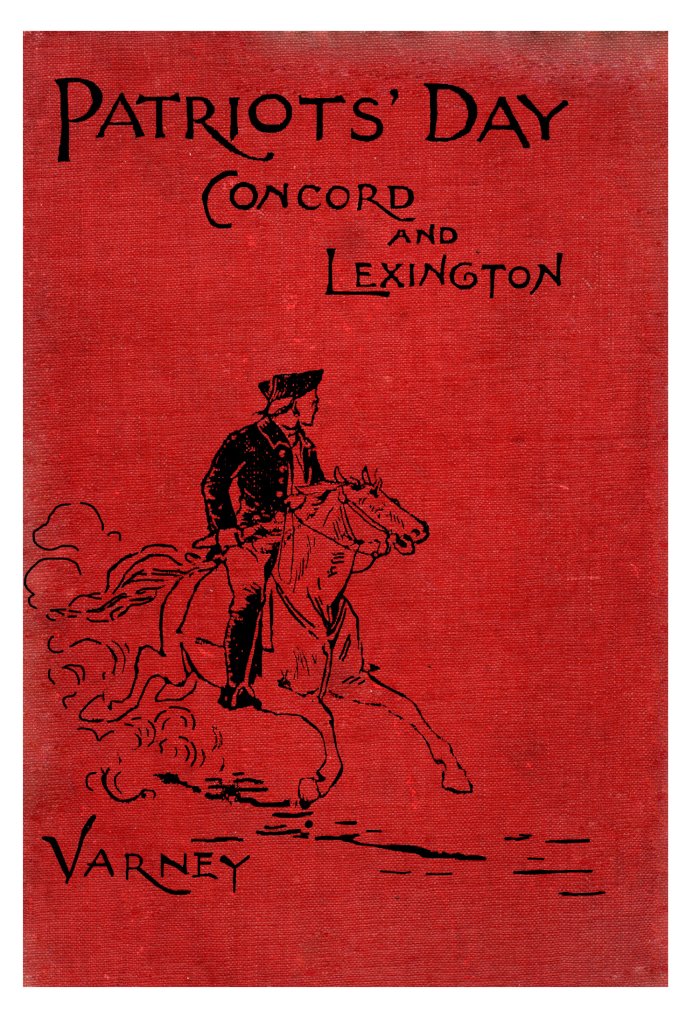








Facebook Comments